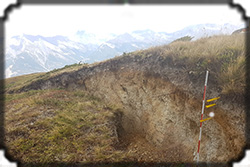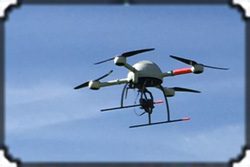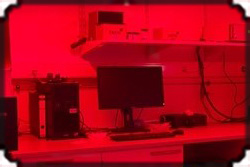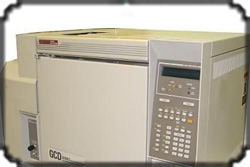Service Activities
Institute of Earth Sciences
| Institute of Earth Surface Dynamics
Digital microscopy: The digital microscopy lab contains three polarizing microscopes, all equipped with motorized stages, a binocular and a MicroDrill station.
Cathodoluminescence microscopy: Cathodoluminescence microscopy is used to highlight features that cannot be observed using standard transmitted or reflected light.
Scanning electron microscopy (SEM): Three scanning electron microscopes are currently available at ISTE: a Zeiss Gemini 500, a Tescan Mira II LMU, and a CamScan MV2300.
Electron probe microanalyzer (EPMA): An electron probe micro-analyzer (EPMA) is a microbeam instrument used primarily for the in situ non-destructive chemical analysis of minute solid samples.
X-ray micro-computed tomography: X-ray Computed Tomography (CT) is a non-destructive technique to visualize interior features within solid objects, and for obtaining digital information on their 3-D geometries and properties.
X-ray diffraction: The X-ray diffraction lab is equipped with an ARL Thermo X'tra powder diffractometer.
X-ray fluorescence: X-ray florescence spectrometry is used to identify and quantify the chemical elements present in solid, powdered and liquid samples.
Raman spectroscopy: The LabRam HR800 (HORIBA Scientific, Jobin-Yvon) is a confocal high-resolution Raman spectrometer.
Laser ablation-ICP-MS: Mass spectrometry with inductively coupled plasma ion source is widely applied for the determination of elemental composition and isotope ratios.
SwissSIMS ion probe: The Cameca IMS 1280-HR is a large radius secondary ion microprobe. Isotopes of a wide range of elements (from H to U) can be measured.
NanoSIMS ion probe: The Cameca NanoSIMS N50L is a ion microprobe optimized to produce images of large chemical or isotopic variations in solid samples in which high spatial resolution is required.
Sediment geochemistry: Lab devoted to the chemical analysis of sediments and soils, with in particular the measurement of their C, H, N, S and P contents.
Hydrothermal lab: The hydrothermal equipment consists of 10 vertical cold-seal pressure vessels (bombs) with split tube furnaces.
Clean lab: Preparation room with a controlled level of particle contamination meeting the standard ISO 6 (class 1000). The lab is equipped with two extraction hoods and three laminar flow hoods.
Sedimentary lab: The sedimentary lab is dedicated to the separation and the preparation of microfossils from sedimentary rock samples.
HF lab: Because of its ability to dissolve oxides, hydrofluoric acid (HF) is commonly used for separating microfossils from hand specimens.
Thin section lab: The thin section lab is aimed at preparing thin sections of rocks and minerals. The hand specimens are first sawed and grinded.
Aquarium research lab: This purpose-built lab houses marine and freshwater aquaria for keeping and growing live invertebrate animals.
Institute of Earth Surface Dynamics
 Analytical platform: From this page, you can select the type of environment you want to analyze …
Analytical platform: From this page, you can select the type of environment you want to analyze …
 Geomorphology: The laboratory of geomorphology has mainly equipment for field geomorphological studies …
Geomorphology: The laboratory of geomorphology has mainly equipment for field geomorphological studies …
 Luminescence and ESR dating laboratory: Quartz and feldspar minerals produce thermoluminescence (TL) and optically stimulated luminescence (OSL) …
Luminescence and ESR dating laboratory: Quartz and feldspar minerals produce thermoluminescence (TL) and optically stimulated luminescence (OSL) …
 Organic geochemistry: The organic geochemistry lab is designed to provide the capability to develop scientific understanding of organic compounds …
Organic geochemistry: The organic geochemistry lab is designed to provide the capability to develop scientific understanding of organic compounds …
 Stable isotope laboratory: The Stable isotope laboratories house a number of state-of-the-art gas source mass spectrometers and peripheral equipment …
Stable isotope laboratory: The Stable isotope laboratories house a number of state-of-the-art gas source mass spectrometers and peripheral equipment …
